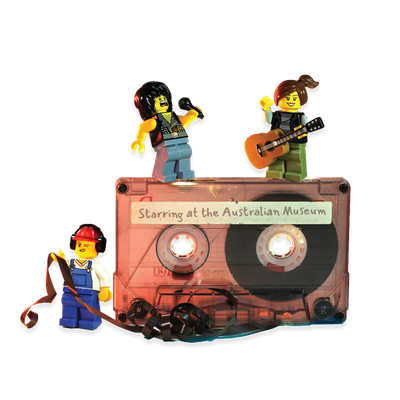Your search returned 39 results
By Page Type
By Tag
- All
- fish (966)
- blog (698)
- fishes of sydney harbour (400)
- First Nations (293)
- Blog (236)
- AMRI (169)
- archives (165)
- Aboriginal and Torres Strait Islander (135)
- Eureka Prizes (131)
- insect (126)
- Ichthyology (125)
- geoscience (109)
- minerals (102)
- climate change (98)
- podcast (94)
- Fish (91)
- Anthropology (89)
- International collections (80)
- Minerals Gallery (78)
- wildlife of sydney (78)
- Labridae (77)
- frog (73)
- gemstone (70)
- history (63)
- photography (63)
- staff (61)
- Mollusca (60)
- gem (59)
- Birds (58)
- education (57)
- Gems (56)
- Indonesia (56)
- AMplify (54)
- shark (54)
- people (53)
- exhibition (51)
- earth sciences (50)
- past exhibitions (50)
- Gobiidae (48)
- Pomacentridae (45)
- sustainability (45)
- Serranidae (44)
- science (43)
- lifelong learning (42)
- Earth and Environmental Science (41)
- Syngnathidae (41)
- Ancient Egypt (40)
- Bali (40)
- bird (40)
- dangerous australians (40)
-
Reef Stonefish
https://australian.museum/learn/animals/fishes/reef-stonefish-synanceia-verrucosa-bloch-schneider-1801/Reef Stonefish, Synanceia verrucosa (Bloch & Schneider, 1801)
-
Sydney Funnel-web Spider, Atrax robustus
https://australian.museum/learn/animals/spiders/sydney-funnel-web-spider/Probably the most notorious of all spiders, Sydney Funnel-webs have a fearsome reputation. Most of this is deserved, but some is exaggerated.
-
Giant Centipede
https://australian.museum/learn/animals/centipedes/giant-centipede/Giant Centipede, Ethmostigmus rubripes
-
Box Jellyfish
https://australian.museum/learn/animals/jellyfish/boxjellyfish/The box jellyfish is a large and transparent sea jelly with a box-shaped bell and up to 60 tentacles in four clumps along the base of the bell.
-
Australian Paralysis Tick
https://australian.museum/learn/animals/insects/australian-paralysis-tick/The Australian Paralysis Tick, Ixodes holocyclus, is found in Eastern Australia and is a parasite to native mammals, livestock, pets and even people.
-
Dugite, Pseudonaja affinis
https://australian.museum/learn/animals/reptiles/dugite/Well-known to south-western WA residents, the Dugite has made itself at home around urban and semi-rural areas, drawn to the prevalence of its favoured prey – the house mouse.
-
Redback Spider
https://australian.museum/learn/animals/spiders/redback-spider/Redback spiders belong to the Family Theridiidae, which is found worldwide. The notorious Black Widow Spider (Latrodectus sp) of the United States is a close relative of the Redback Spider, and only differs in appearance by the absence of a red dorsal stripe.
-
Cane Toad
https://australian.museum/learn/animals/frogs/cane-toad/The Cane Toad is tough and adaptable, as well as being poisonous throughout its life cycle, and has few predators in Australia.
-
Smooth Stingray, Dasyatis brevicaudata (Hutton, 1875)
https://australian.museum/learn/animals/fishes/smooth-stingray-dasyatis-brevicaudata-hutton-1875/Smooth Stingray, Dasyatis brevicaudata (Hutton, 1875)
-
Find out more
Tails from the Coasts
Special exhibition
On now![]()
-
Find out more
Burra
Permanent kids learning space
10am - 4.30pm![]()
-
Discover more
RELICS
Special Exhibition
Opens 16 August 2025![]()
-
Discover more
Minerals
Permanent exhibition
Open daily![]()





